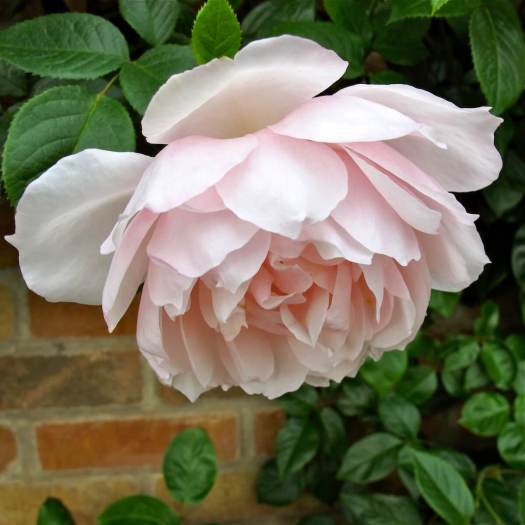
Most articles online about drooping roses are geared towards fixing a problem. Cures suggested for a drooping rose include:
- Watering it more (assuming the rose is wilting)
- Watering it less (assuming its roots are staying wet and rotting)
- Feeding it (assuming the plant is lacking some elements)
- Feeding it less (assuming persistent elements have built up too much in the soil, or that the canes are outgrowing their strength)
- Staking, growing against an obelisk or training as a climber in the case of vigorous roses
- Hard pruning
- Diagnosing it with one of several rose diseases, then treating the problem
- Leaving it be (assuming that the canes will strengthen enough to support heavier flowers from the third year on).
It’s not hard to see how gardeners might get confused.
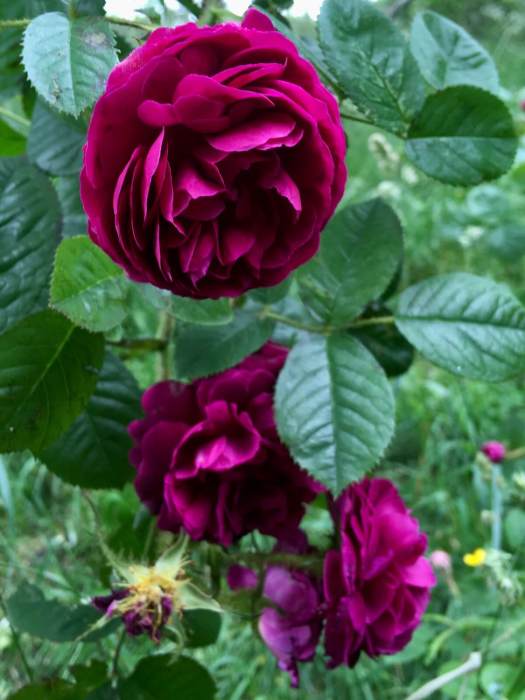
My ‘fix’ for a droopy rose may be controversial – where nodding flowers are the natural growth habit of a healthy rose, we should celebrate it.
I contend that the crimson roses we found dripping from an old shrub rose in the semi-wild grounds of Liverpool’s Anglican Cathedral would have been less alluring had they been formal and stiffly upright. I may be in the minority, but I’m not alone.
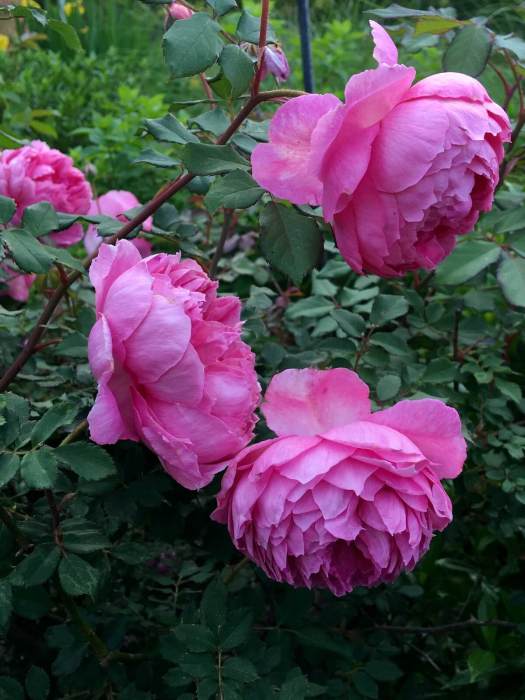
My sweetheart and I recently visited a keen rose grower, Nikki Hunsucker, who with her husband is creating an English style garden in rural Mississippi. While we were admiring her roses, she pointed out one of her favourites, ‘Huntington Rose’ (known as Rosa ‘Alan Titchmarsh’ in some parts of the world). By any standards, this rose nods, wherever it is grown. Its richly perfumed blooms are full and weighty with a tumbling habit, the petals falling in raggedy layers around the centre.
I smiled at her choice because, like Nikki, I consider drooping roses to be a matter of style, not a flaw.
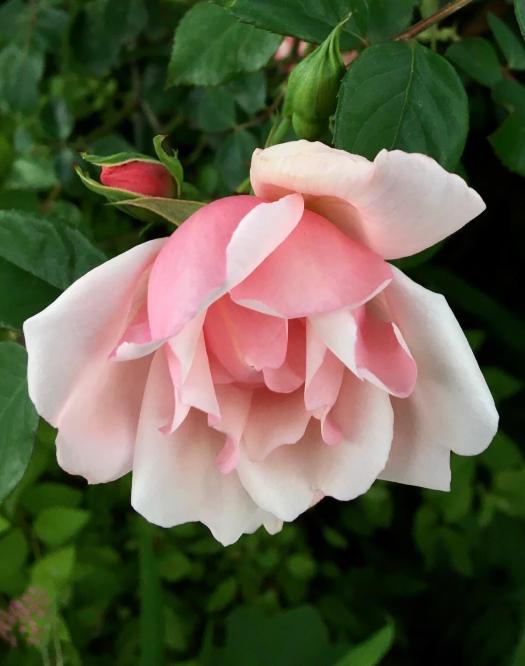
Some gardeners firmly believe that roses ought to face upwards and have strong, unbending stems. If that’s a dealbreaker for you, it would be prudent to audition a rose by seeing it growing in a garden nearby or to ask your preferred supplier about its habit before taking the plunge.
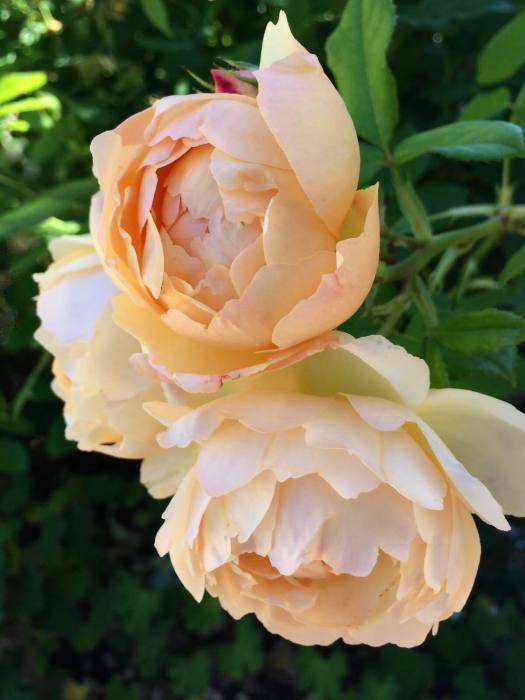
We are naturally influenced by what we see, and pendulous roses tend not to be the ones shown in rose catalogues or websites. Even breeders who release some roses with gracefully nodding habits typically choose upwards- or outwards-facing blooms to illustrate them.
And it’s unlikely that any rose breeder will describe their rose as ‘drooping’ since the word has so many negative associations – wilted, for example, or faded. Coded messages to look for in rose descriptions include ‘arching stems’, ’rounded growth’, and ‘tumbling’ or ‘nodding’ flowers.
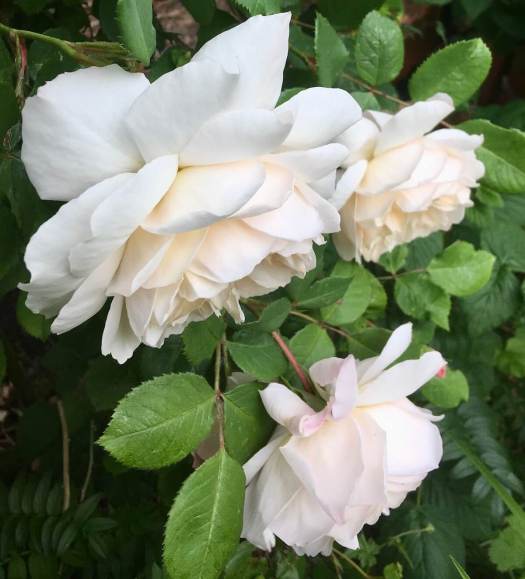
These cream coloured English Roses reliably bloom on a raised terrace in Mum’s garden, facing her kitchen window. The roses are packed with so many petals that their pink stems gradually bow under the strain as the roses open out fully. I’ve photographed them from the side to highlight their habit.
If you can find room in your heart for roses that sit less stiffly on their stems, you’ll be rewarded by the atmosphere they bring. They nod, bounce and roll on the wind; tumble amongst other flowers; can be huge and colourfully flamboyant or have a demure charm.
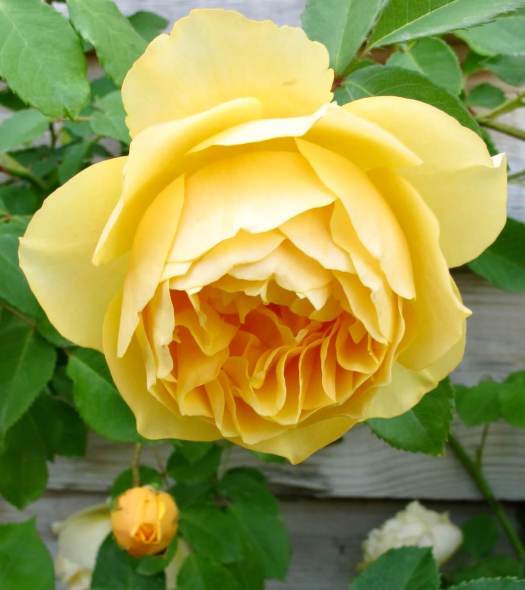
Climbing roses, especially the taller ones, are better off having pendulous blooms, so the flowers can be seen, smelled and enjoyed.
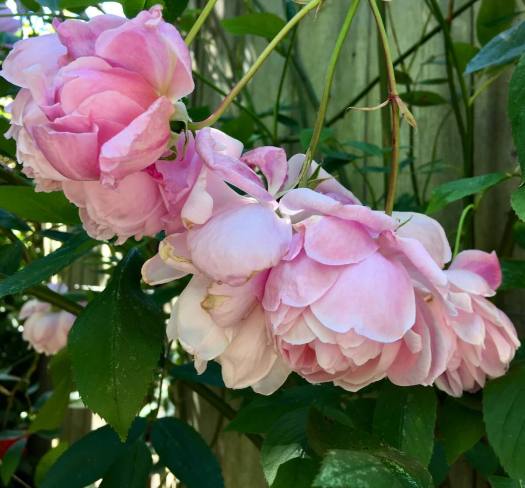
At RHS Harlow Carr earlier this week, I listened as a succession of visitors oohed and aahed as they turned their faces upwards to appreciate the pink climbing roses (R. ‘Mortimer Sackler’, above) that frame the circular entrance to Diarmud Gavin’s courtyard garden. Not one of them added, ‘But the flowers are droopy.’ Though they are.
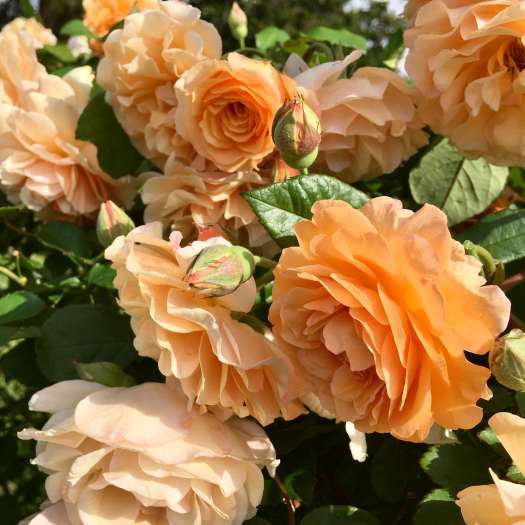
Some people consider rose buds as the height of beauty, others enjoy the classic, upright forms of hybrid tea roses. For me, there’s nothing better than a cluster of roses in different stages of opening.
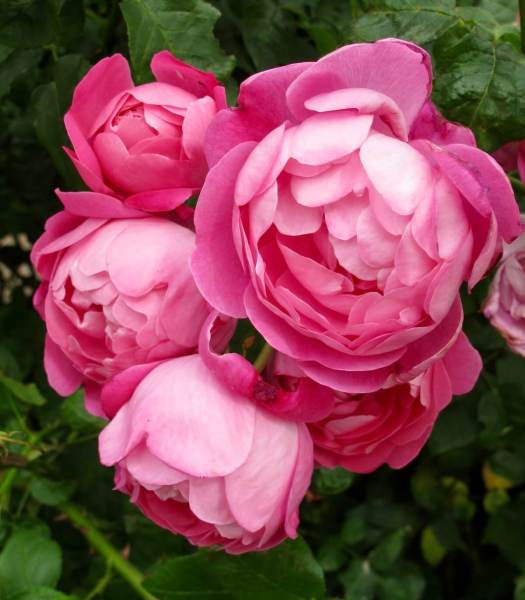
The first blooms of cluster-producing roses usually start off facing upwards or outwards, then gradually tumble with age and are pushed down by subsequent flowers. Are they the worse for tumbling? Not so far as I’m concerned.
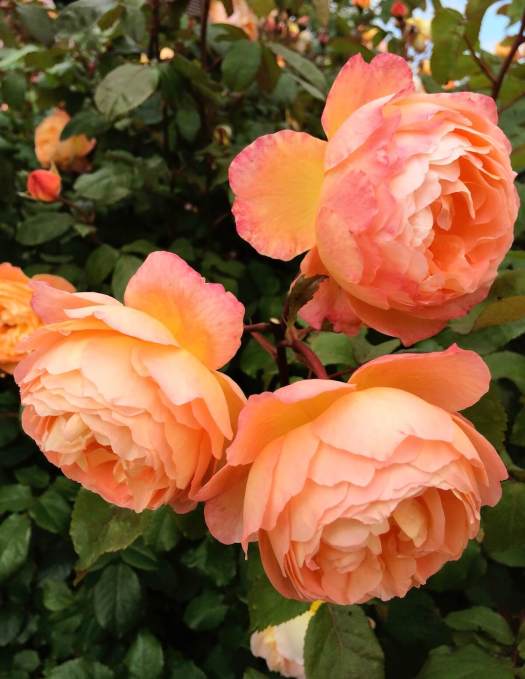
And perhaps that’s the point – by hanging in different attitudes, the roses seem to be displaying every aspect of their various selves for our admiration. I’m minded to adapt the cliche about the film star, back in the age of celluloid: ‘Shoot her right profile – no, shoot the left! Better still, shoot every which way!’
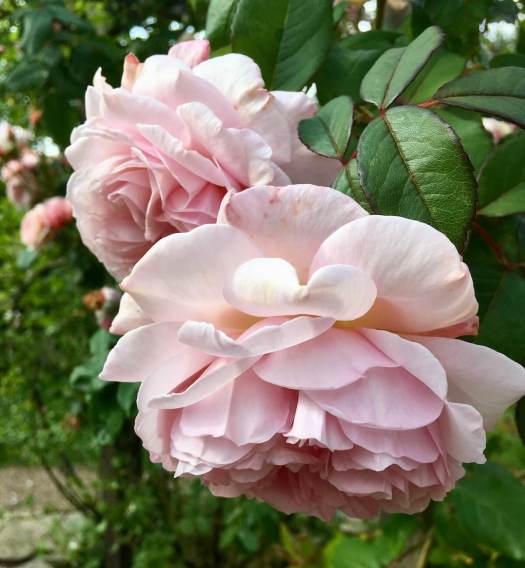
Or, to quote W.H. Auden,
‘The blessed will not care what angle they are regarded from,
Having nothing to hide.’
Quite. I’m sure I looked under the blooms of one of my favourite roses (R. ‘A Shropshire Lad’, above) before taking the picture, but chose to highlight the depth of the bloom and the deft backwards curls of the petal edges.
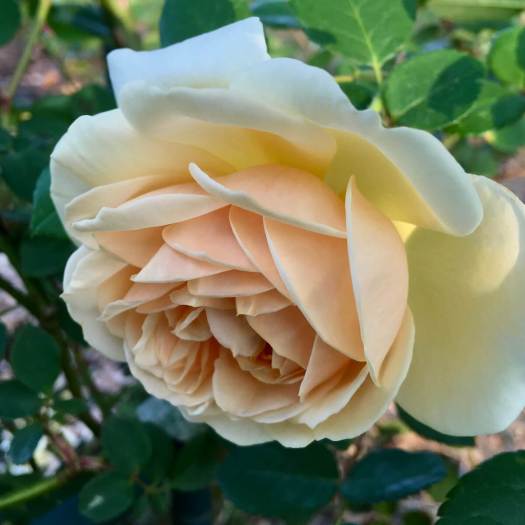
We all have our sense of style so it’s right that we don’t all like the same thing, but if your roses are drooping and are otherwise healthy and flowering well, consider reframing what’s happening.
The flowers of some roses naturally incline downwards. They’re pendulous. They nod, sway, drip, tipple or hang from their stems. Whoever criticised an apple or a bunch of grapes for hanging?
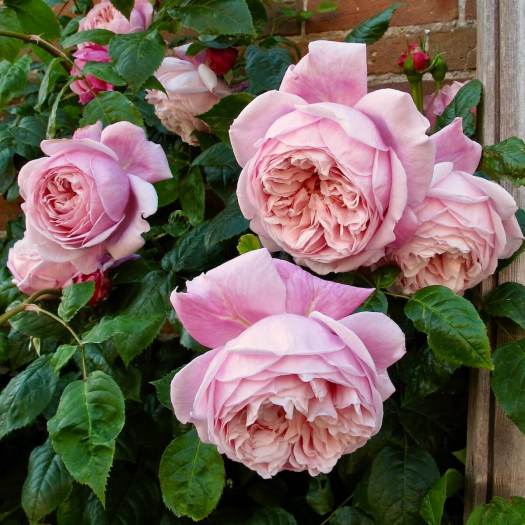
Languidly tumbling roses embody the sigh we rose-lovers greet them with. They yield under a hot summer sun, much as we do.
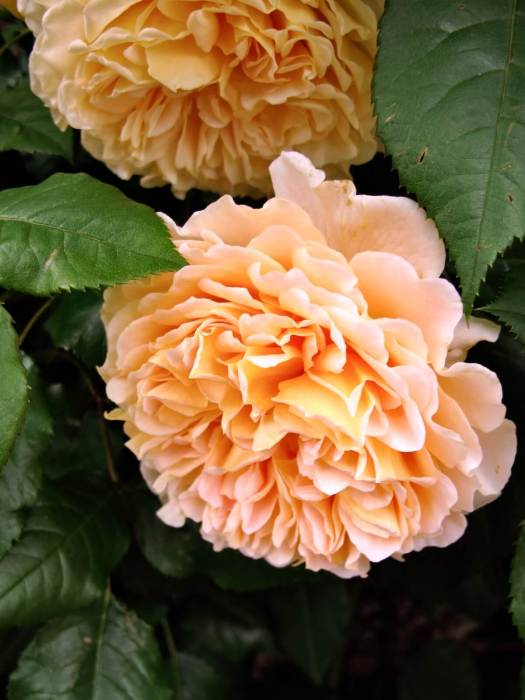
Drooping roses can be photogenic and I decided it was time to show them some love. Upright or hanging, roses of all forms and habits will always seem to me the essence of mid-summer.

We feel good when we see our roses smiling. Today I saw a couple of burned leaves. I don’t know the reason just now. Hope the plant survives.
I hope so too. Good luck!